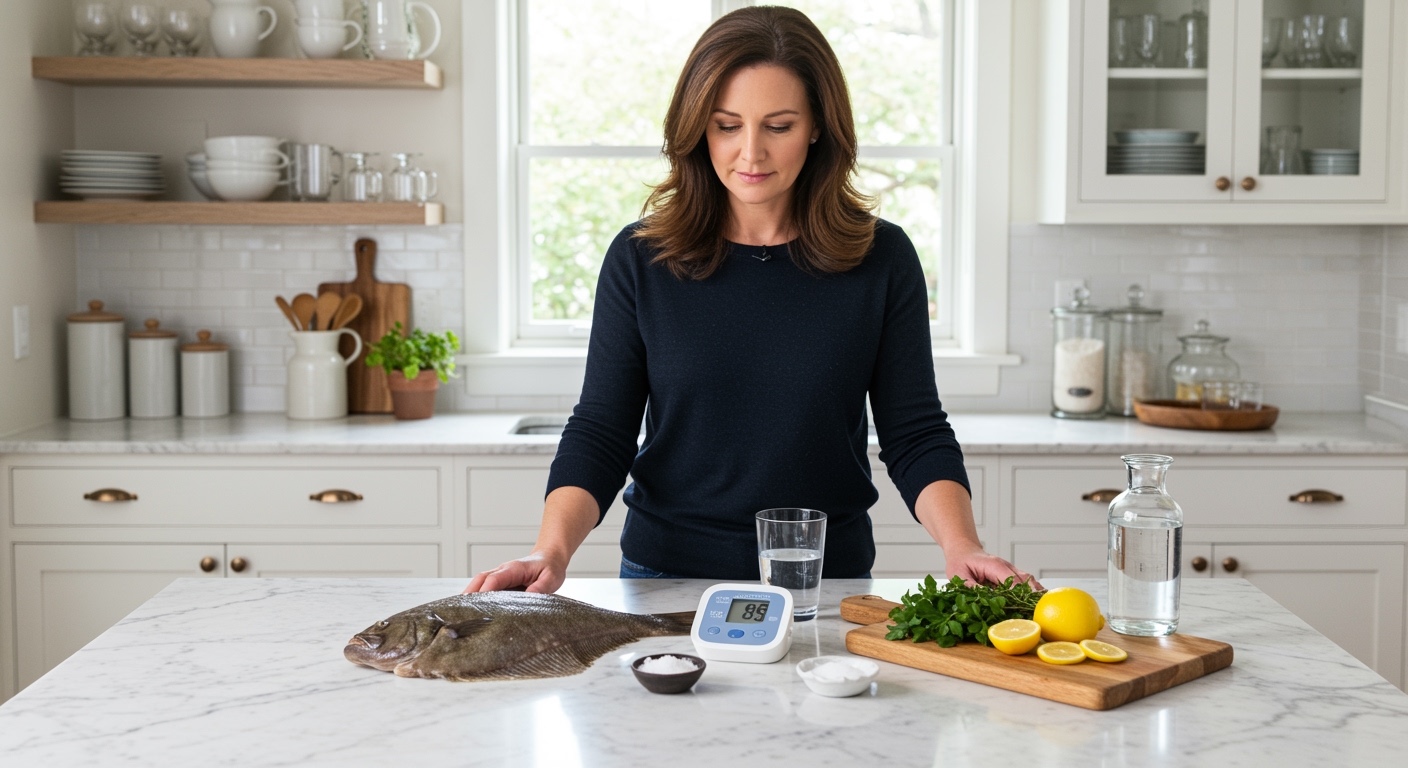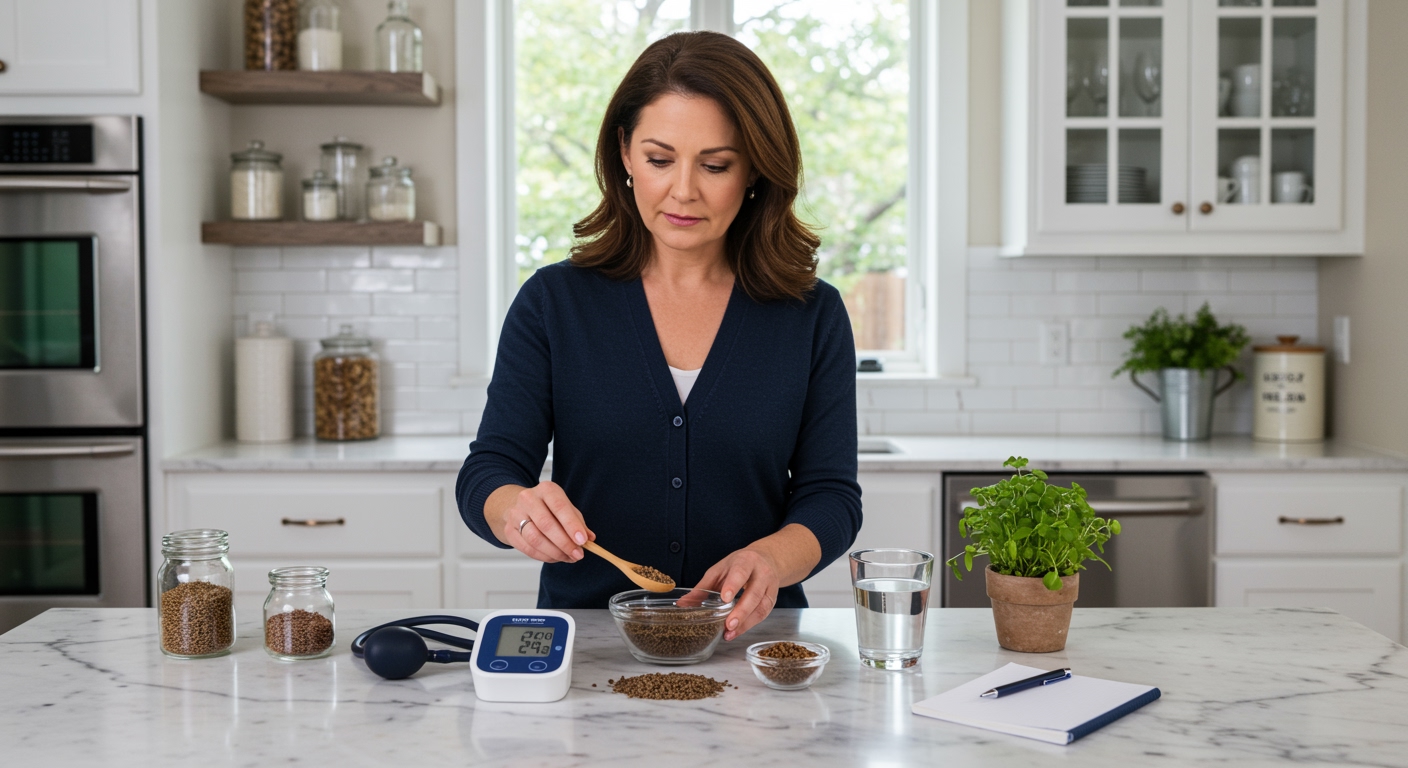✪ Key Takeaway: Plaice itself does not raise blood pressure, but preparation methods and sodium content can affect cardiovascular health.
Introduction
You walk into the fish market and see fresh plaice on display, but a nagging worry stops you from buying it.
Maybe someone told you that certain fish can raise blood pressure, or perhaps you read conflicting information online about plaice and cardiovascular health.
Hi, I am Abdur, your nutrition coach, and today I am going to explain exactly how plaice affects your blood pressure and what you need to know before adding this flatfish to your diet.
What Makes Plaice Different From Other Fish?
Plaice belongs to the flatfish family and lives primarily in European waters, making it a popular choice in many coastal regions.
This fish contains approximately 18 grams of protein per 100-gram serving, which supports muscle function and overall health.
The sodium content in fresh plaice ranges from 80-120 milligrams per 100 grams, which is relatively moderate compared to processed seafood options.
Plaice also provides essential omega-3 fatty acids, specifically EPA and DHA, which research shows can support cardiovascular health when consumed regularly.
The fish contains minimal saturated fat, typically less than 1 gram per serving, making it a lean protein source that fits well into heart-healthy eating patterns.
✪ Fact: Fresh plaice contains about 40% less sodium than most canned fish varieties.
How Does Plaice Actually Affect Blood Pressure?
Fresh plaice in its natural state does not contain compounds that would directly increase blood pressure in healthy individuals.
The omega-3 fatty acids in plaice, particularly EPA and DHA, have been shown in multiple studies to support healthy blood pressure levels through their anti-inflammatory properties.
These beneficial fats help improve blood vessel flexibility and reduce inflammation in the arterial walls, which can contribute to better cardiovascular function.
The moderate potassium content in plaice, around 300 milligrams per 100 grams, works alongside sodium to maintain proper fluid balance in your body.
When your body maintains proper fluid balance, your heart does not need to work as hard to pump blood through your circulatory system.
Research indicates that regular consumption of lean fish like plaice as part of a balanced diet may actually support healthy blood pressure maintenance rather than increase it.
✪ Pro Tip: Aim for 2-3 servings of fish per week to maximize cardiovascular benefits without overdoing sodium intake.
When Could Plaice Become Problematic For Blood Pressure?
The main concern with plaice and blood pressure comes from preparation methods rather than the fish itself.
When you bread and fry plaice, you add significant amounts of sodium and unhealthy fats that can negatively impact cardiovascular health.
Restaurant preparations often include heavy salt seasoning, butter, or high-sodium sauces that can push your daily sodium intake well above recommended levels.
Smoked or cured plaice products contain much higher sodium levels, sometimes exceeding 1000 milligrams per serving, which can contribute to blood pressure elevation in sensitive individuals.
If you have existing kidney problems or are particularly sensitive to sodium, even moderate amounts from fish preparation could affect your blood pressure readings.
Additionally, consuming plaice alongside other high-sodium foods in the same meal can create a cumulative effect that temporarily raises blood pressure in some people.
✪ Note: Always check restaurant menus for preparation methods and request low-sodium cooking when possible.
What Are The Best Ways To Prepare Plaice For Healthy Blood Pressure?
Grilling, baking, or steaming plaice without added salt provides the maximum health benefits while minimizing sodium intake.
Season your plaice with herbs and spices like dill, parsley, garlic, or lemon juice instead of salt to enhance flavor naturally.
These natural seasonings not only taste great but also provide additional antioxidants and nutrients that support overall cardiovascular health.
When buying plaice, choose fresh over frozen when possible, as some frozen varieties may contain added sodium for preservation purposes.
Pair your plaice with potassium-rich vegetables like spinach, broccoli, or sweet potatoes to create a meal that actively supports healthy blood pressure levels.
If you must use oil for cooking, opt for heart-healthy options like olive oil in small amounts rather than butter or other saturated fats.
Consider marinating plaice in lemon juice and herbs for 30 minutes before cooking to add flavor depth without relying on sodium-heavy seasonings.
✪ Pro Tip: A simple lemon-herb marinade can make plaice taste restaurant-quality while keeping sodium levels minimal.
The Bottom Line
Plaice itself does not raise blood pressure and can actually be part of a heart-healthy diet when prepared properly.
The fish is not the problem, the preparation often is, so focus on cooking methods that enhance rather than comprise its natural health benefits.
I would love to hear about your experiences with plaice or any questions you might have about fish and blood pressure in the comments below.
References
At NutritionCrown, we use quality and credible sources to ensure our content is accurate and trustworthy. Below are the sources referenced in creating this article:
- PMC: Omega-3 Fatty Acids and Cardiovascular Health
- British Heart Foundation: Fish Oils and Blood Pressure Powers
- Our Plaice: Fish Nutritional Facts
- Frozen Fish Direct: Which Fish Are Beneficial for Hypertension Control





